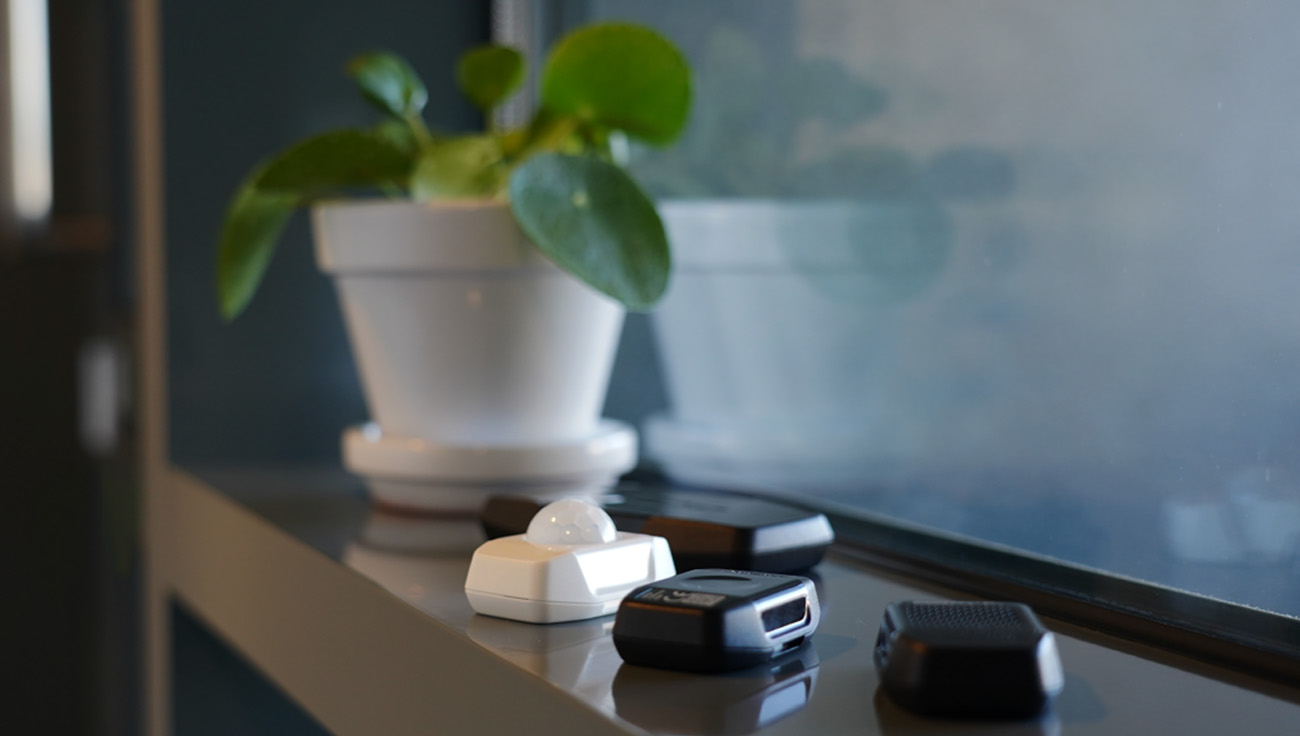Creating business value with IoT devices – your guide to IoT solutions
Increasing business value is at the top of the priority list for every business decision-maker, and technology can help in driving this.
We strongly believe that IoT devices are a perfect way to optimize your operations, increase efficiency, and create new revenue streams for your business to deliver sustainable growth.
The revenue in the IoT value chain is estimated to reach USD211 billion by 2028, of which the hardware will account for 26%.
The market is large and it is important to choose the right solution to drive your business needs.
In this guide, we go through everything about IoT devices, from available technologies, pricing, and sustainability, all the way to the discussion on when it is the right time to change your technology partner.
Table of contents
- IoT data in smart buildings – how is it used?
- Choosing a technology partner for your IoT solution
- What are the common technologies in IoT devices?
- What are the major communication protocols used for smart buildings?
- Sustainability in IoT – Is it environmentally sound?
- How do IoT devices get their power?
- Wireless, battery-powered vs mains-powered IoT devices: Which is best for smart buildings?
- Factors affecting the TCO in smart solutions
- What are the hidden costs of sticking with the wrong digitalization partner?
- Why should you consider changing your technology partner?
Let’s start by looking at IoT data in general and how it is used:
IoT data in smart buildings – how is it used?
IoT and smart buildings are all about data, but how is all this data used and what kind of data can you get?
Modern facility management is dependent on different data sources, so we’ll explore different options for acquiring data to optimize and manage your buildings better.
In our article, we share some examples of what kind of IoT data you can get in smart buildings and how it’s commonly used: IoT data in smart buildings.
So it is essential to have data in modern facility management, but what should you look for in a technology partner?
Choosing a technology partner for your IoT solution
When you’re planning to bring IoT as part of your business operations, choosing the right partner is critical, but often a daunting task. There is no shortage of technology providers out there with a large variety of offerings.
Often, you want to start working with one partner only, as working with multiple IoT vendors risks poor customer experience, security issues, unexpected costs, and communication issues between the different technology providers.
To help you figure out where to start when choosing a technology partner, we have created a list of what to consider when you’re choosing one. This list includes things like scalability, flexibility, and support of your specific use case:
Choosing the right technology partner
One of the deciding factors in your decision is the actual technology used as technology is the key enabler in smart solutions:
What are the common technologies in IoT devices?
Creating business value using IoT systems requires a combination of many key factors.
Technologies such as sensors and connectivity are key to creating a useable network of data, however, application and an effective data centre infrastructure are also key. Similarly, a primary objective should be ensuring these smart functionalities create true value and efficiency for the companies implementing them.
These sensors enable buildings to collect data on their environment and operations and react to this in real-time. Devices, such as proximity and temperature sensors, are arguably the backbone of smart buildings, as they equip them with the smart senses it requires to collect crucial data. A variety of sensors can be implemented to achieve different application objectives.
So what does this variety include and what are their benefits? Read our article by Indre Semeskeviciute here.

To accompany these IoT devices, some sort of connectivity is needed to enable communication between the devices. There are a few major communication protocols:
What are the major IoT communication protocols used for smart buildings?
IoT protocols for smart buildings are the key to making the most of the latest innovations in every corner of modern life.
The key to successful IoT implementation is finding the most suitable communication protocol for your use case, allowing your devices to communicate seamlessly.
Read our article on the major IoT communication protocols here.
Creating new solutions raises the question of the sustainability of doing so. In our view, there are two major things to consider:
Sustainability in IoT ( – is it environmentally sound?)
Sustainability in IoT is a very important matter, though perhaps often forgotten underneath all the tech hype.
There are two viewpoints on this matter, the first being how these IoT solutions help improve quality of life. For example, over 40% of all energy consumed globally is done by buildings, so it is extremely important to create solutions that help us reduce that amount.

Another viewpoint on this is that the solutions need to be created in an environmentally sustainable way. Reducing the environmental footprint of these solutions is important in creating sustainable solutions.
So how does this all work in reality? Our article gives you insight into use cases in different industries, methods of reducing footprint and why this all matters.
One part of sustainability is naturally the power supply. How are IoT devices powered and how to make lasting solutions?
How do IoT devices get their power? The battery life of IoT devices is more than you think
The way an IoT device is used and its capabilities have a direct impact on energy consumption. In some use cases, one could just measure the temperature every minute for years to provide mission-critical information to other systems.
So that brings the question of how the IoT devices get their power and how to make it last.
Whether you are concerned about battery sizes, energy usage optimization, or the actual battery life of a wireless IoT device, our expert Marko answers all of this in his article:
Choosing the right way to power your devices is important. What options do you have?
Wireless, battery-powered vs mains-powered IoT devices: Which is best for smart buildings?
One of the most common questions related to IoT devices is about how should they be powered. The two options are battery-powered and mains-powered devices, which each have their preferred use cases.
Battery consumption, power draw, and scalability of the solution are the main deciding factors when choosing between the solutions.
Read more about how these factors affect your decision-making from our article here.
Energy consumption is a part of the total cost of ownership of smart solutions. What other factors should you consider?
Factors affecting the TCO in smart solutions
Many times, while checking the value created in digitalization projects we are just looking at the price of the device or asset instead of the TCO in smart solutions. But is the price of the IoT device the only cost you need to pay for a solution?
No.
There are many things to do before data starts to stream to a service and we must not forget about the things to be done during the whole life cycle of a service.
The device needs to be installed, connected to a service, paired with a service, managed, maintained, updated, and many other things during its life cycle.
So, it is critical to consider the total cost of ownership – TCO in smart solutions instead of just the hardware.
All of the costs are not as visible as others, and there are caveats in sticking with the wrong partner, as it could raise your hidden costs:
IoT has become an integral part of our everyday lives – at work and in our homes, but it has not happened overnight. Many global organizations took their first steps in IoT a decade ago and later on, brought in other solutions and integrated them with the existing devices.
As technology keeps evolving, the need for integrations between multiple systems grows exponentially – as does the likelihood of issues between several systems and, therefore, hidden costs related to them.
Telling the difference between right and wrong solutions for your case is not easy and is often done in hindsight. This is where having a knowledgeable partner will help:
Why should you consider changing your technology partner?
Working with the right technology partner is crucial to a successful business. No matter how great your idea and team are, at some point, you need a technology partner. Finding the perfect fit for your company requires exploring options, understanding what you want from them, and what they offer, and then selecting the best fit for your company.
Having the wrong technology partner will cost you money and time, but also massively impact the chances of your business being successful.
So, you have ended up with one technology partner, and you are happy with your choice. However, you are wondering whether you made the right choice and is grass greener on the other side. Well, it might be.
Conclusion
Business value is the key outcome when working with IoT and IoT devices.
Choosing to work with the right technology partner, with a proven track record, ensures that your business will thrive.
Check out our Thingsee IoT devices solution to start your transformation into the digital world:

IoT data in smart buildings
Smart buildings are all about data, but is it used?


